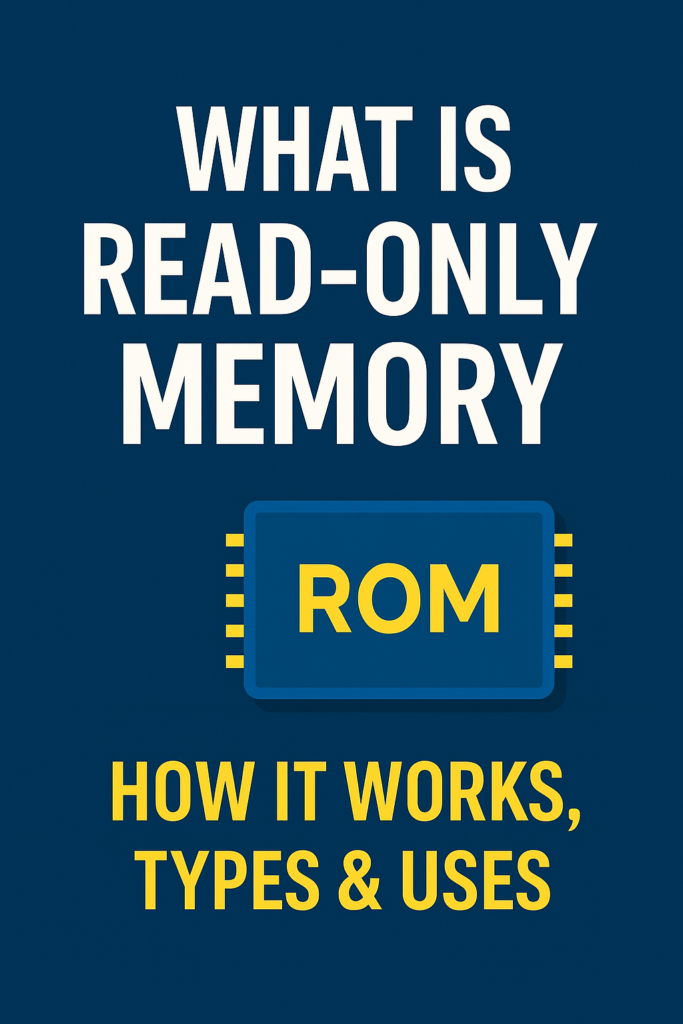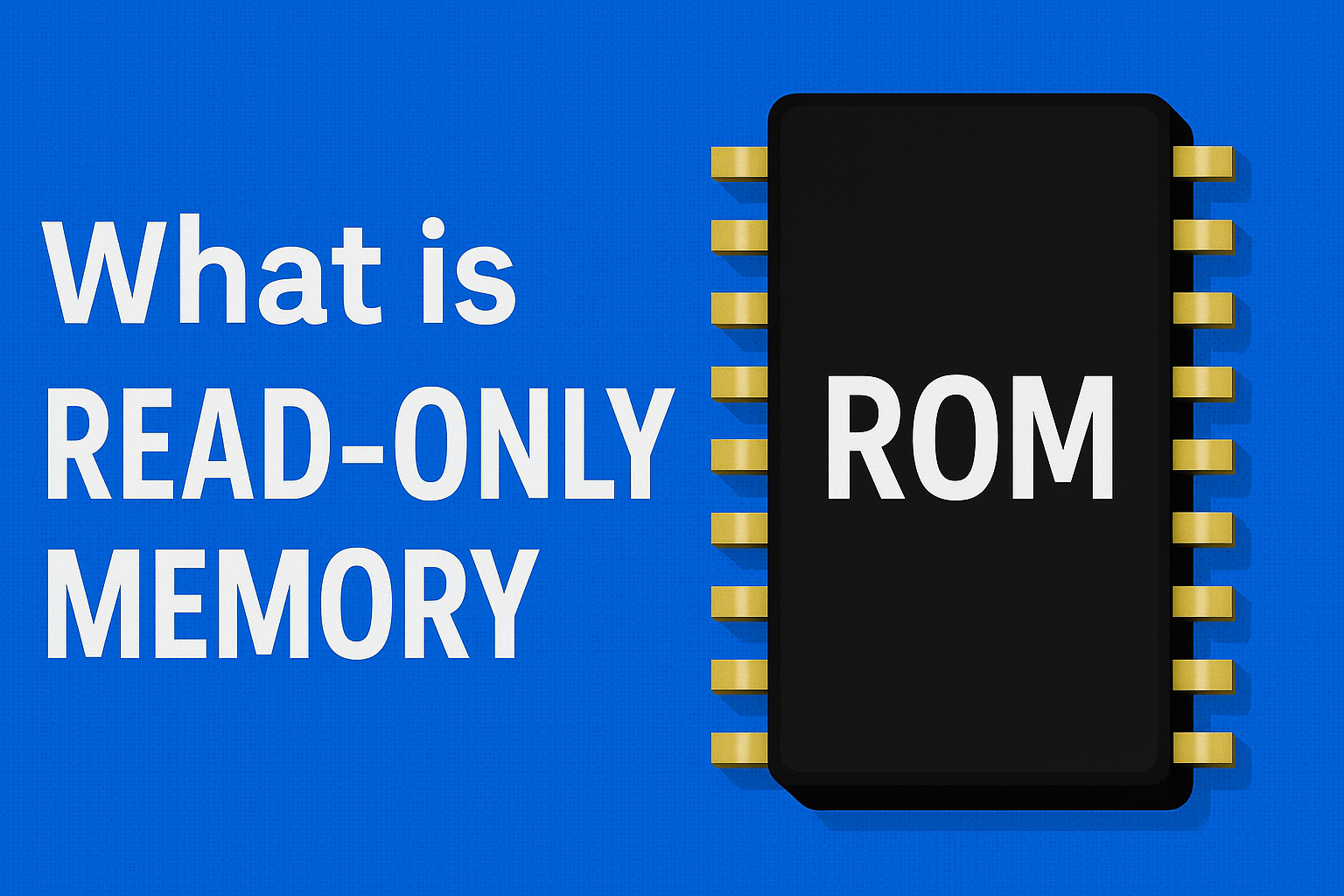By [SANSWRANG]
Imagine This…
You’re in a quiet village, early morning. A man named Ariyan gets up to start his day. Like every day, he doesn’t think about how to tie his shoes, brush his teeth, or make tea—it’s all automatic.
Why? Because those routines are hardcoded into his brain through years of repetition.
In the digital world, ROM is exactly like that part of Ariyan’s brain. It stores essential, unchangeable instructions that help a computer start up and function—just like Ariyan’s morning routine helps him begin his day without confusion.
What is ROM (Read-Only Memory)?
ROM (Read-Only Memory) is a type of permanent, non-volatile memory that holds critical data and instructions even when the power is off. It’s primarily used to boot up devices, store firmware, and ensure the system always knows what to do when it turns on.

How ROM Works (Simple Analogy)
Let’s say Ariyan bought a microwave. The microwave doesn’t need to be taught how to heat food every time—it knows already. That’s because its software is stored in ROM.
Similarly, a computer uses ROM to:
- Start the operating system (like waking up)
- Perform hardware checks
- Load the necessary software for basic operations
ROM = Permanent memory your system trusts blindly.
Types of ROM (With Real-World Examples)
| Type | Explanation | Real-Life Example |
|---|---|---|
| Mask ROM (MROM) | Hardcoded by manufacturer. | Old gaming cartridges |
| PROM | Programmed once post-manufacturing. | Security key fobs |
| EPROM | Can be erased with UV light and rewritten. | Early BIOS chips |
| EEPROM | Can be rewritten electrically, one bit at a time. | Microcontrollers in appliances |
| Flash ROM | Electrically rewritten in blocks. | USB drives, modern BIOS |
How ROM Differs from RAM
Let’s compare them in story form again:
- Ariyan has a notebook (RAM) where he jots down things for the day—like a to-do list. At the end of the day, he tears the page and starts fresh tomorrow.
- But he also keeps a manual (ROM) with permanent steps: how to make tea, how to use the washing machine, and so on. This manual never changes.
| Feature | ROM | RAM |
|---|---|---|
| Volatility | Non-volatile (permanent) | Volatile (temporary) |
| Speed | Slower | Faster |
| Editability | Not easily editable | Read/write easily |
| Use | Booting & firmware | Active program storage |
| Size | Small (MBs) | Large (GBs) |
Advantages of ROM
- Reliable and permanent
- Doesn’t lose data when power is off
- Ideal for storing boot instructions
- Resistant to malware due to non-editability
- Cost-effective for small memory needs
Disadvantages of ROM
- Not easily updated
- Limited storage capacity
- Slower compared to RAM
- Requires special tools for rewriting
Where ROM is Used (Applications)
- Computers – Bootloader and BIOS firmware
- Video Game Consoles – Storing game data
- Washing Machines & Microwaves – Operating software
- Mobile Phones – Boot process and system partitions
- Cars – Engine control units (ECUs), dashboard software
Frequently Asked Questions (FAQs)
1. Why is ROM important in a computer?
ROM holds the firmware, such as BIOS, that is essential to start the computer and check all components.
2. Can ROM be changed?
Not directly. Some ROM types like EEPROM and Flash ROM can be updated using special software or firmware tools.
3. How much data does ROM usually store?
ROM usually stores a few megabytes (MB) of data—just enough for essential programs.
4. Is ROM faster than RAM?
No. ROM is slower and used only for fixed instructions. RAM handles dynamic data with much higher speed.
5. What is firmware, and how is it related to ROM?
Firmware is software permanently stored in ROM. It’s the first set of instructions your computer or device uses when turned on.
Conclusion: Why ROM is a Silent Hero
While RAM gets all the attention for speed, ROM is the quiet warrior ensuring your device knows how to start, what to load, and where to go next. Like Ariyan’s unchanging morning routine, ROM gives your device the confidence to start every single day—with zero confusion.




Leave a Reply